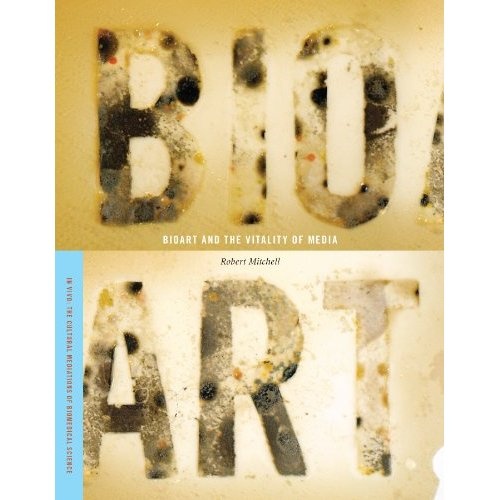This book is an interesting source for its discussion of the features of the new genre ‘bioart’.Although Robert Michell uses bioart primarily as a case-study though which to examine or redefine ‘media’ (as a term that connotes both a site of growth and a means of communication), there are some areas of discussion of the fundamental qualities of bioart and it’s critical reception that were useful to me.
The book defines bioart as art that uses biotechnology in its processes and material. This includes encouraging biomaterial (life) into particular shapes or behaviours, and keeping it alive for an exhibition. In this respect, my project is bioart.
Something I found particularly interesting was the references to bioart as a transgressive form of art, pushing at the boundaries of what qualifies as art. It feels that I am always operating at these boundaries in my practice- in fields that must ‘prove’ (or otherwise not care) that that are a part of contemporary art. While this can sometimes be frustrating, I also think it is incredibly exciting: all of art history is built on new movements that were first rejected and then absorbed into the canon.
“[bioart offers] unprecedented possibilities for art… a logical next step in contemporary art… [which can] credibly claim to have made a more revolutionary break with tradition” (Kac, quoted in Mitchell)
Another interesting reflection offered by Michell is the difficulty in creating projects between science and humanities in higher education institutions, owing to differences in pay, strain on resources, and requiring the necessary ability to make the project attractive to bureaucratic bodies. This reflection is interesting to me in terms showing how unique the SciArt module is, and also provides a checklist of things to consider when designing cross-disciplinary projects in the future.
Bioart definitely offers up opportunities to bring new audiences to both art and biology, and to relate the real-world applications of both fields. However it is the conceptual utilisation of biotechnological materials that defines bioart, so I feel that also links to the work of Adam Zaretski, who’s interest in these materials critically avoids utilitarianism and usefulness.
References:
Michell, R. (2010). Bioart and the Vitality of Media. Washington: University of Washington Press
